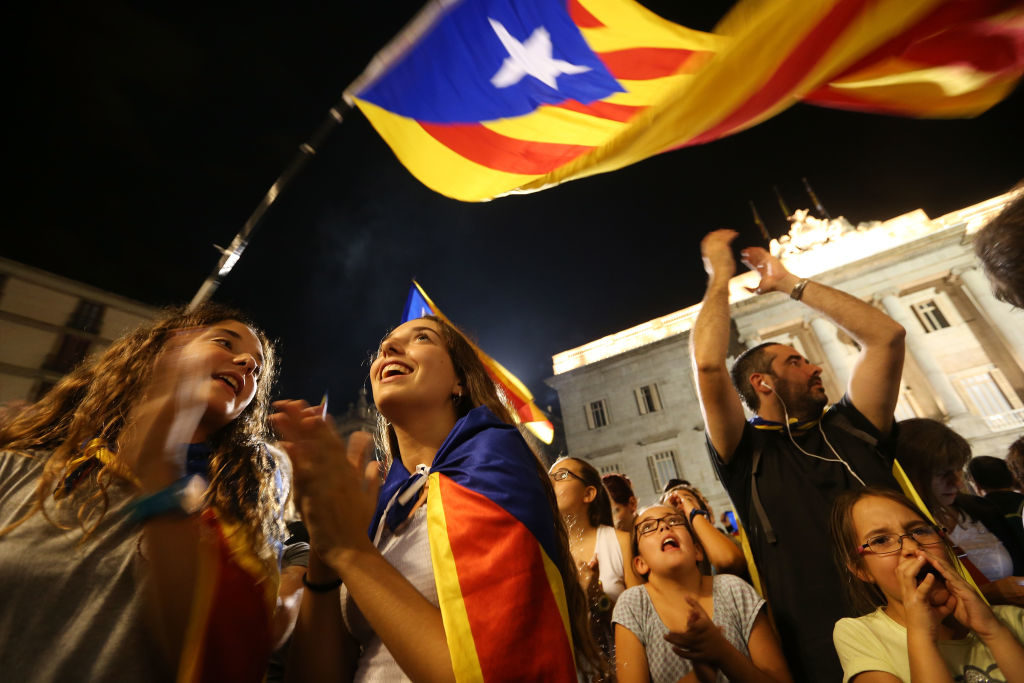Politics
How the Catalan Crisis Could Affect the Future of Dalí, Miró, and the Prado, Too
Leading museums insist that it is business as usual during the Spain-Catalonia stand-off, but pressing questions remain unanswered.

Leading museums insist that it is business as usual during the Spain-Catalonia stand-off, but pressing questions remain unanswered.

Javier Pes

It’s business as usual—in a surreal way—for the Dalí Theatre-Museum and other leading cultural institutions in Catalonia. Many opened their doors yesterday for the first time since nationalist politicians voted to declare independence from Spain on Friday.
Thousands took to the streets of Barcelona over the weekend to show their support—or demonstrate against—the split with Spain as divisions deepen across the region. The ongoing constitutional crisis has deterred tourism, which was down an estimated 15 percent last month.
And as the Spanish government moves to impose temporary direct rule of Catalonia ahead of the regional elections on December 21, life could soon get more complicated for public-private institutions, such as the Dalí museum in Figueres in north-east Catalonia, the Fundació Joan Miró in Barcelona, and the Museu Picasso de Barcelona.
In the early days of the Catalan crisis in 2014, Antoni Pitxot, the late former director of the Dalí Theatre-Museum, told Catalan News that the institution and its collection were “indivisible.” But that theory may now be put to the test. Dalí established the museum in his hometown of Figueres in the north-east of Catalonia in 1974—but left his art to the Spanish people when he died in 1989. While key works like The Great Masturbator (1929) went to Madrid’s Museo Reina Sofía, more than 130 formed the basis of the collection in Figueres. Now, their future is uncertain.

Dali Theater-Museum in Figueres, north-east Catalonia, photo by Lluis Gene/AFP/Getty Images.
The status of the museum and the division of Dalí’s art between Madrid and Catalonia might have to be re-negotiated if the political crisis turns into a stalemate. For the time being, the director of the Reina Sofía, Miguel Borja-Villel, tells artnet News: “The fact that the Spanish government has applied the Article 155 of the Spanish Constitution in Catalonia does not have to affect the functioning of the [Madrid] museum in any way.” (Borja-Villel was referring to the decision by the Spanish government to take over of the regional government immediately after nationalist Catalan MPs voted for independence.)
The most immediate effect of the crisis on Barcelona’s Museu Nacional d’Art de Catalunya, meanwhile, has been a dip in visitor numbers, a spokeswoman confirms. Catalonia’s museum of medieval to contemporary art drew 86,000 visitors in September, up around 10,000 from a year ago. October’s attendance was around 66,000 compared to 72,000 last year, a 12 percent fall. The museum suspects that more locals than tourists have been deterred from visiting in the weeks after the controversial, unofficial independence referendum.
The concern for everyone is if peaceful pro-independence demonstrations or counter-demonstrations turn violent as happened at polling stations when riot police stepped in.
Barcelona’s Fundacació Joan Miró, which is nearby in the hills of Montjuic, is “working normally,” a spokeswoman says, although it has an internal crisis of its own. Since October 24, its galleries have been closed due to a strike by staff working for a sub-contractor, Serveis Educatius Ciut’art. Only its bookshop, library and restaurant remain open.
The foundation’s incoming director Marko Daniel, who is due to arrive in January from the Tate in London, may be greeted by continued uncertainty about public funding in addition to lost income from ticket sales. The government of Catalonia and the city of Barcelona provide around 15 percent of the foundation’s budget.
“The current situation does not leave us indifferent and we expect the evolution of events like the rest of Catalonia,” says a spokeswoman for the foundation, which is home to Miró’s work among that of others, including Alexander Calder’s Mercury Fountain, created in 1937 for Paris Expo’s Spanish Republican Pavilion.
Uncertainty over public funding, which has been exacerbated by Spain’s political crisis, cuts both ways. The director of Madrid’s Prado Museum, Miguel Falomir, told the Spanish media last week that if public funding is not confirmed this year, work on the museum’s planned €36 million ($42 million), Foster + Partners-designed expansion into the nearby Hall of Realms would not be able to start as planned in October 2018.
Loan agreements between institutions in Madrid and Catalonia could also get more complicated—and significant as symbols of ongoing cultural exchange amid the crisis.
This month, the Prado is due to open a major exhibition of paintings and drawings by one of Catalonia’s most successful artists of the late 19th century, Mariano Fortuny y Marsal (1838-1874). The opening date of November 21 is a month before regional elections in Catalonia to elect a new government. An important lender to the show is the Museu Nacional d’Art de Catalunya in Barcelona.